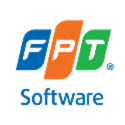Concerned About Legacy Mainframes or Connected Applications?
An often-unrealized challenge of mainframe modernization is tackling supporting apps. This effort can be made less daunting with the proper implementation of tools and processes. (SPONSORED)
August 13, 2023

(SPONSORED)
One of the overlooked challenges with modernizing a system that includes the mainframe is how to tackle the applications that are not native called supporting apps. These applications are relatively easy to port or are cloud native. They have been written to benefit service-oriented architecture, horizontal scalability, or leveraging data that may be otherwise difficult on the mainframe. Typically, they augment the resources in the cloud to provide the agility offered by CI/CD and its support for horizontal scalability.
Mainframe vs. Supporting Applications
Mainframe modernization will center around the application portfolio. From there it is important to distinguish what is "mainframe-native" code from code that may run on the mainframe or other platforms such as x86. Grouping applications into these categories helps us understand what tools and processes to apply as strategies. The desired outcomes can be different based on technical capabilities, cost, and business needs.
We will focus our attention primarily on the tools, processes, and expertise needed to support the migration to the cloud. Since there is a great deal of information out there regarding PaaS or leveraging SaaS, we will remain focused on how to achieve those benefits.
The first step is to understand what is required for modernization. A well-structured workshop will help identify the important assets that would be involved. It will also include expressing the business goals and tradeoffs that are important to the company. From here, a vision and roadmap with clear milestones can be defined based on the art of the possible.
Tools are a vital part of migrating to any system to the cloud. Tools that include automation provide repeatability, accuracy, and completeness. When presented with complex amount of code that is vital to your company's operation, using tools to provide consistent results will significantly reduce risk. These serve different roles that include running analysis, conversion, or testing.
Clear progress has been made with tools that directly convert mainframe code and database assets into procedural languages such as Java and C#. These tools help ease the mainframe part and several companies provide these tools with different approaches and results. It is important to choose such a tool appropriately to meet the goals defined in the roadmap.
Conversion of Supporting Apps
Migrating supporting apps have a significant impact on the overall migration effort. Leveraging tools is essential for shortening the time to migrate and reducing risk. It is important to identify all the ways the supporting apps can integrate and interact with the mainframe with certain patterns. These are not architectural patterns but the tell-tail signs of how technology was used for connecting apps. For example, supporting apps may integrate via MQ, Web Services, direct access to DB2, via DB2 stored procedures, etc.
Any large environment that has several integrated applications or systems will add complexity to migration. Experts in this space have developed tools and techniques to help safely migrate/modernize non-native mainframe apps. These same tools and techniques address some of mainframe-unique situations that must be taken into consideration.
Understanding the types of integrations and how they interact is key. This provides insight into where and how these apps should be deployed. One example is to take into consideration latency and if co-location would be necessary. A thorough analysis (as practical) always helps shorten the effort and reduce risk. Early analysis can help identify areas where there is opportunity for rationalization.
With all the tools and expertise and ways to help identify the "unknown" there is technical debt that occurs over time with any system if not addressed. This is a challenge, but this is where tools and techniques come in again to provide solutions or options. Analysis is valuable in providing insight and defining a course for action.
Don’t Underestimate the Importance of Testing
Of all the stages and steps in mainframe migrations, testing is often one of the biggest or longest tasks. All aspects need to be thoroughly validated since it is essential to a company's operation. Mainframe conversion tools provide good testing for a "like-for-like" conversion.
Testing often surfaces performance problems, which is an important step because the legacy system is usually so much different from the target environment. Triggers in the new environment? DB concurrency and escalation? Chatty integrations? Network latency?
Supporting apps have been added to the system to compensate or fill gaps that the mainframe could not support or was not agile enough to support in a particular timeframe. These are often overlooked. Fortunately, migrating or modernizing supporting apps is a typical modernization effort and the nuances that of their integration with the mainframe conversion is a practice that should not be daunting given the proper implementation of tools and practices in these scenarios.

Len Bertelli is seasoned thought leader skilled at advising organizations on ways to leverage new technologies to build and maintain a reliable foundation and critical applications that meet strategic business goals. As a senior vice president at FPT Software, he works closely with leading organizations in North America on advising digital transformation strategies and enterprise architecture for business-critical technology initiatives. Prior to joining FPT, Len served in CIO, CTO, and VP of Development roles for various manufacturing and waste management organizations including Waste Management, Casella Waste, and Pitney Bowes.
You May Also Like





